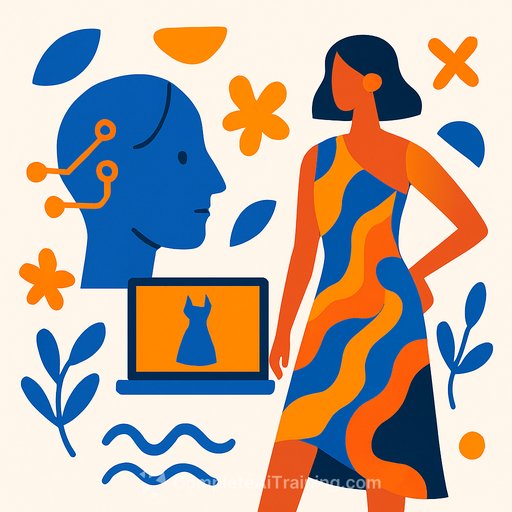AI-Powered Wearable Art: Igniting a Creative Revolution in Fashion
AI is transforming fashion by turning it into wearable art, helping with design generation, trend forecasting, and sustainable innovation. From The Fabricant’s virtual couture to IBM Watson’s emotion-responsive dress, AI expands creative possibilities while raising questions about authorship, bias, and traditional craftsmanship.
Fusion of Fashion and AI
Fashion has always been shaped by human intuition, emotion, and cultural stories. Now, AI systems that understand patterns, aesthetics, and emotional cues collaborate with designers to create new expressions. AI goes beyond optimizing production or marketing analysis—it acts as a co-creator, offering data-driven insights, generative art, and predictive models that support human vision.
AI can analyze vast databases covering fashion history, cultural trends, color theory, and material science. This helps designers forecast trends, develop new silhouettes, and propose unexpected fabric combinations. Rather than replacing designers, AI amplifies creative potential, enabling innovation with speed and scale.
AI Co-Design: Case Studies in Wearable Art
1. The Fabricant: Fashion Beyond the Physical
The Fabricant, a Dutch digital fashion house, is a pioneer in AI-assisted virtual couture. Their digital-only designs are made for virtual identities, social media, and the metaverse. AI generates intricate patterns and fluid forms that are impossible to create physically. In 2019, The Fabricant partnered with blockchain company Dapper Labs to sell “Iridescence,” the world’s first digital-only dress, for $9,500. This showcases how technology can create new economies in wearable fashion.
2. IBM and Marchesa: AI Goes to the Red Carpet
In 2016, IBM Watson teamed up with luxury brand Marchesa to create the “cognitive dress” for the Met Gala. Watson analyzed millions of images to identify colors, fabrics, and patterns designed to evoke emotions. The dress featured LED lights that changed color in response to real-time social media sentiment, making AI an active part of the art. This project highlighted AI’s potential to create dynamic, interactive fashion.
3. AI for Sustainable Fashion Design
Brands like Stella McCartney and Adidas use AI for sustainability beyond aesthetics. AI assesses the environmental impact of materials and predicts wear patterns to extend garment longevity. Google's Environmental Insights Explorer, combined with AI tools, helps designers evaluate the carbon footprint of fabric choices, pushing fashion toward eco-friendly solutions.
Generative AI and the New Aesthetic
Generative AI creates designs that challenge traditional fashion logic. Generative adversarial networks (GANs) study old designs and produce entirely new styles by mixing historical elements and cultural influences. Berlin-based designer Damara Inglês collaborates with AI to blend African textiles with cyber-futuristic aesthetics, merging human memory and machine creativity to redefine wearable art for the 21st century.
The Democratization of Design
AI tools are lowering barriers for independent creators. Platforms like Fashwell, supported by Cala, offer AI-assisted design tools to emerging designers without the backing of major fashion houses. These tools enable rapid prototyping, visualization, testing, and refinement, expanding access to wearable art and fostering diversity in fashion expression worldwide.
Challenges and Ethical Questions
AI co-design raises important ethical and creative questions. Who owns AI-generated designs? Can a machine be called an artist or co-creator? Does AI threaten traditional craftsmanship by shifting creative work to algorithms? Many AI systems learn from existing data sets, which risk reinforcing Eurocentric beauty standards or ignoring marginalized cultures. Designers and technologists must ensure AI promotes diverse fashion expressions instead of narrowing them.
Conclusion: The New Canvas for Creativity
Fashion co-designed with AI is more than a technological novelty. Collaborating with intelligent systems expands creative possibilities beyond human limits, inspiring new forms, materials, and meanings. This partnership offers a broader canvas for creativity rather than replacing the artist. As these new methods evolve, fashion will continue to reflect our culture and hint at who we might become when creativity merges with technology.
Your membership also unlocks:






